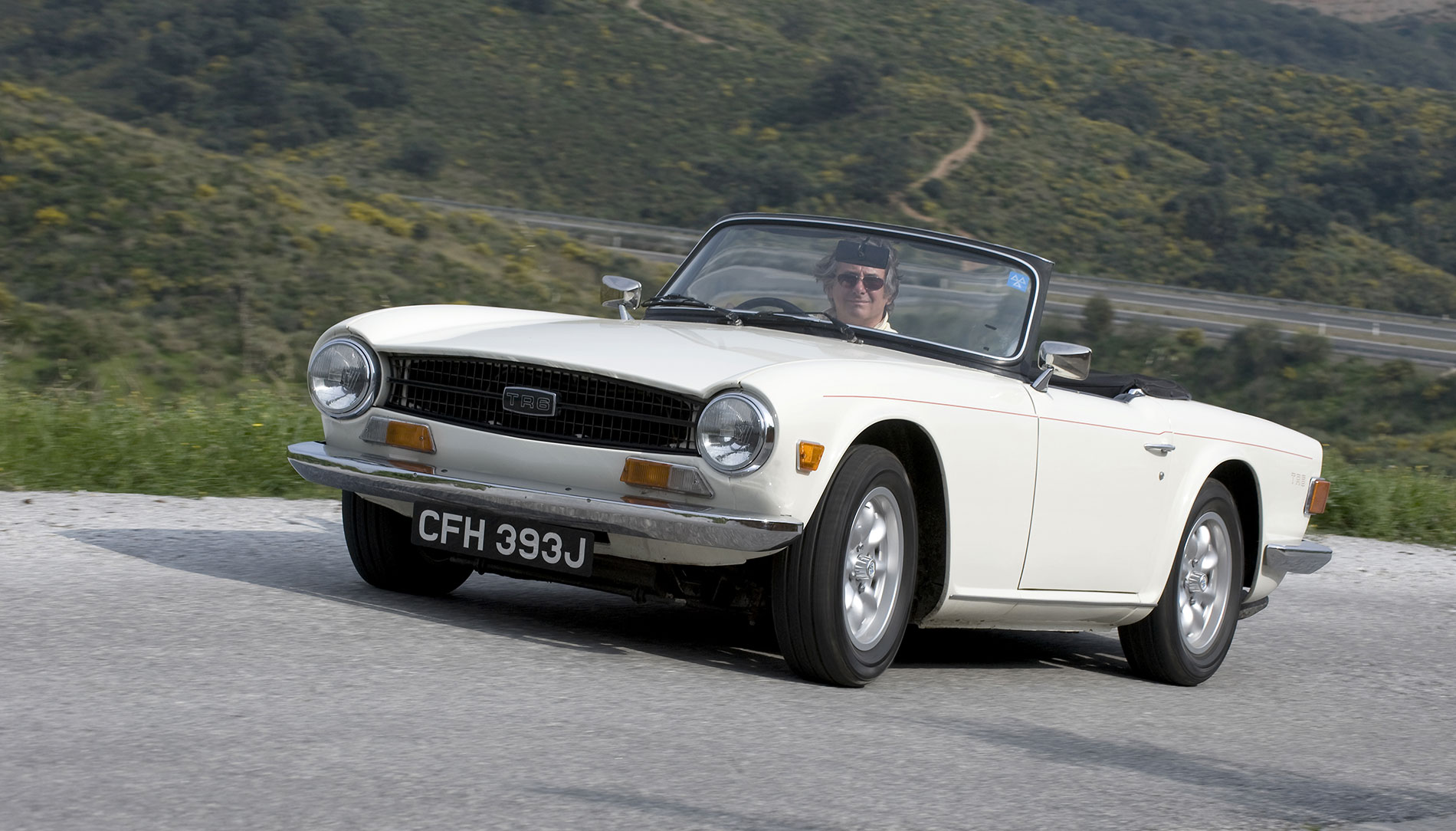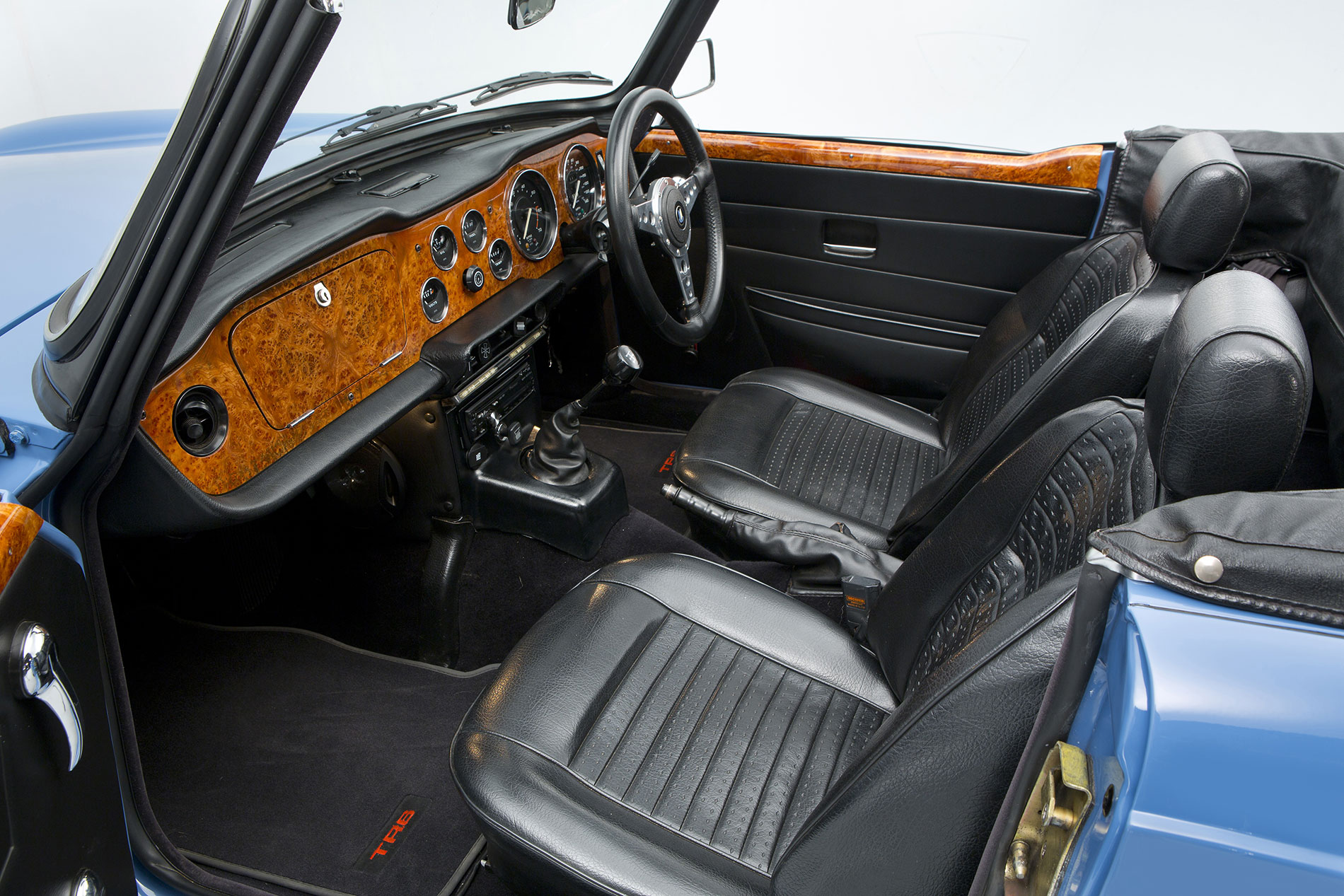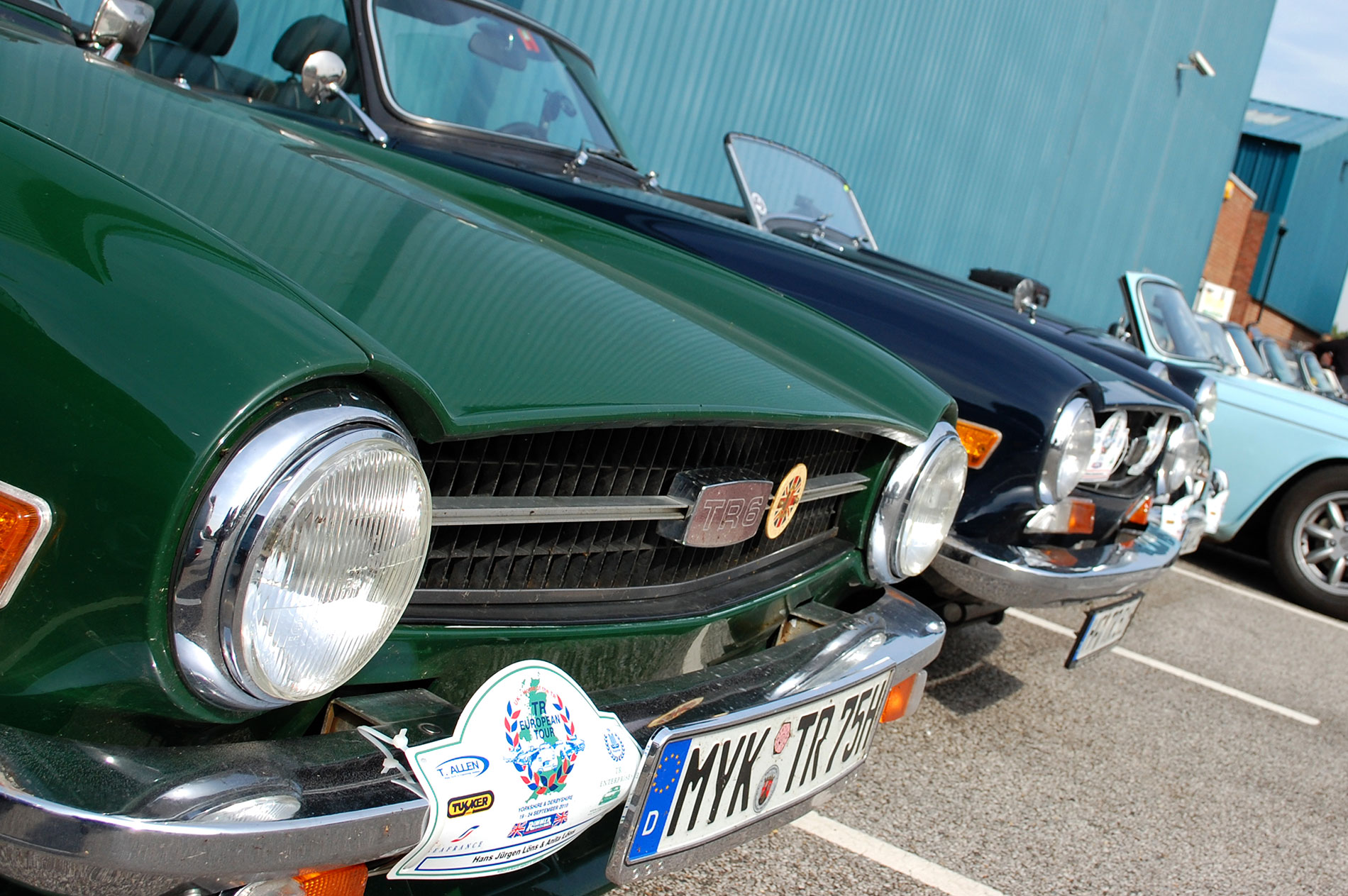Experience the exhilaration of a classic sports car, where the engine purrs like a well-fed tiger beneath your grip. This sensation is what driving a Triumph TR6 in America is all about. This iconic British vehicle is no ordinary motor - it's drenched in history and character, harking back to a time when machines prioritized durability and charm over efficiency.
This feature delves into the Triumph TR6's impact on the American automotive landscape, highlighting not only its timeless allure but also its influence on the narrative of American roads. From the sleek design elements by Karmann that turned heads at every street corner to the diverse power variants that granted it unparalleled performance prowess, there are numerous layers waiting to be unveiled.
Whether you're a classic car enthusiast or merely curious about their evolutionary journey through time, fasten your seatbelts because you're embarking on a ride through automotive history.
Triumph TR6 in America: a historical overview
The Triumph TR6, a classic British sports car, holds a unique place in American motoring history. Its journey started back in November 1968 when it was introduced as the successor to both the Triumph TR5 and the TR250.
This vehicle surged onto the scene with its powerful fuel-injected engine, causing a sensation across North America. However, it's worth noting that NAS models were equipped with carburetors instead of fuel injection. The last of these punchy fuel-injected models rolled off production lines by July 1975. But, the Federal version lasted another year on assembly belts before bidding adieu.
A sports car boom
The arrival of Triumph's new model coincided with a growing interest for sports cars among North Americans during this period – an exciting era often referred to as 'the sports car boom'. Thanks to its robust six-cylinder engine and sleek design, it became synonymous with freedom and adventure for many driving enthusiasts at that time.
It wasn't just about speed though - drivers were also charmed by its overdrive J-Type gearbox mountings which allowed smoother gear changes and enhanced comfort during long drives. After all, what is a good drive if not comfortable?
An enduring legacy
To say that people liked their ride would be an understatement because even today you can spot well-maintained examples roaring down highways or gracing vintage car shows. Partly because spares aren't hard to get - thanks largely due to companies like Rimmer Bros who specialize in parts for classic British vehicles including those belonging to the Land Rover range besides our beloved TR6.
The TR6's legacy is so powerful that it can still influence the pulse of car enthusiasts. The secret behind this enduring love story? Perhaps it’s TR6 engine service kits, which make maintenance a breeze or maybe the Brake Servo (Brake Booster) - a device that assists in applying the brakes by amplifying the force exerted on the brake pedal. It uses vacuum pressure from the engine to make braking more effective and requires less physical effort from the driver. This results in improved braking performance and control.
The Triumph TR6, a true icon among classic sports cars, is known for its exceptional design and performance. Let's delve into these key elements that make this British machine an object of desire on both sides of the Atlantic.

Redesigned body by Karmann
Karmann, a renowned German coachbuilder, was entrusted with redesigning the bodywork for the new model. This resulted in aesthetic enhancements as well as functional improvements that elevated the overall driving experience.
The TR6 used many components from its predecessors - it shared its chassis frame, inner shell, and doors with them but introduced a revamped outer shell crafted by Karmann. It stood out due to wider wheels offering better road grip and improved suspension geometry which added stability during high-speed runs or sharp turns. To add more control at higher speeds, an anti-roll bar was also incorporated into its structure.
Sporty yet refined aesthetics
Apart from boosting functionality aspects like aerodynamics and handling characteristics, Karmann’s redesign significantly contributed to improving aesthetics too – thus successfully marrying form with function in true European fashion. The resultant vehicle sported aggressive front-end styling characterized by bold squared-off lines replacing softer curves found on earlier TR models; while retaining signature round tail lights giving it an unmistakable identity amid other contemporary sports cars.
Beneath this stylish exterior lies equally impressive mechanicals. Its power comes from a robust inline six-cylinder engine capable of propelling this agile beast to exhilarating speeds on open roads or racing tracks alike. The engine, coupled with a meticulously calibrated suspension set-up, made the TR6 not just fast but also engaging to drive – whether it was a Sunday ride in the countryside or tackling corners on a track day.
With wider wheels providing better traction and revised suspension geometry enhancing handling characteristics, driving the Triumph TR6 became an experience to savour. Furthermore, the addition of an anti-roll bar provided much-needed stability at high speeds - making sure that performance never came at the cost of safety.
Evolution of the Triumph TR6 model
These modifications enhanced not only its visual appeal but also improved performance and comfort for drivers.
Wheel trims and steering wheel: adding to aesthetic appeal and driving experience
In the early stages, revised wheel trims were introduced that added a touch of sophistication to this classic Triumph model. But it wasn't just about looks; there was more emphasis on enhancing the driving experience as well. A new helm was added to the mix, designed to enhance driving pleasure.
Suspension geometry changes: boosting performance levels
Beyond cosmetic upgrades, serious thought went into improving overall vehicle dynamics too. For instance, changes made to suspension geometry significantly improved handling characteristics, making each ride smoother than before.

New seats for enhanced comfort
To boost comfort levels for passengers and drivers alike, new seats were brought in during later models' production years. It's these little details that contributed majorly towards customer satisfaction while adding an element of luxury to this sports car boom icon.
Addition of front spoiler: an aggressive touch
A front spoiler addition gave the Triumph TR6 an aggressive stance – further emphasizing its sporty credentials without compromising functionality or performance standards set by previous models like the Triumph TR5 or earlier iterations within the series.
Power variants of the Triumph TR6
The powertrain options in the Triumph TR6 are fascinating to delve into. We find two primary versions - a fuel-injected model and a carbureted variant known as the 'Federal' version.
Fuel-injected vs. carbureted versions
The fuel-injected iteration of the TR6, widely embraced across Europe, proved to be a formidable powerhouse. Sporting a straight-six engine configuration, the CP models churned out an impressive 150 bhp. In contrast, the later CR models slightly dialed down the output to 125 bhp. This output made it one of Britain's first mass-produced cars with fuel injection technology.
In contrast, due to stringent emission regulations at that time in North America, the Federal or US-version opted for twin Zenith-Stromberg carburetors instead, which unfortunately reduced the power output significantly down to 104 bhp.
This variation led to some enthusiasts cheekily referring to these models as ‘TR5-and-a-half’ because they fell somewhere between their predecessor – the TR5 (with mechanical fuel injection) and successor – our star performer here, 'The Fuel Injected TR6'.
Racing versions:
If you think this is where it ends though - you're mistaken. Racing versions took things up several notches further with modified Lucas mechanical fuel injection systems boosting performance right up towards an astounding figure of 255 bhp.
Cylinder engine:
You'd be correct if you guessed that such immense figures wouldn't have been possible without serious engineering work on those cylinder engines. With bore and stroke measurements both slightly over three inches (79.5mm x 76.2mm, to be exact), the TR6's inline-six was more of a 'square' engine - optimised for balance between torque and horsepower.
And oh boy, did it deliver. The fuel-injected version raced from 0-60 mph in just under 10 seconds - impressive even by today’s standards.
Rimmer Bros and the Triumph TR6
If you're passionate about classic cars, particularly the iconic Triumph TR6, then chances are you've heard of Rimmer Bros. Our family-run business is renowned for its expertise in sourcing and supplying parts for this legendary sports car. Our commitment to customer satisfaction has made us a trusted parts specialist in the world of British classic cars.
Customer service at Rimmer Bros
Rimmer Bros isn't just another parts supplier - we offer a service that's truly personal. When it comes to getting advice on anything from gearbox mountings to suspension packages or even finding elusive body parts and fittings, our team provides expert product knowledge based on years of hands-on experience with these vehicles. We understand what sports car enthusiasts need because we share that same passion ourselves.
Our commitment is greater than just delivering top-notch products - we take great pride in offering outstanding customer service at all times. Whether it's helping you find specific TR engine components for your restoration project or advising on how best to improve TR fuel system controls using modern alternatives like Lucas fuel injectors – Rimmer Bros has got your back.
Beyond serving individual enthusiasts though, our services extend into supporting maintenance projects by providing comprehensive vehicle information and model-specific manuals as well. No matter if you’re tackling overdrive conversions or fixing up brake systems - whatever questions may arise during such endeavors, they can be addressed promptly by our experienced staff members who know these models inside out.
A passion for classic cars
Rimmer Bros' passion for classic Triumphs developed naturally from the genuine enthusiasm shared by founders Bill Rimmer and Graham Rimmer. This led them down a unique entrepreneurial path, successfully merging their hobby with a thriving business.
Their commitment extends beyond the Triumph TR series too. From Land Rover parts to assisting with the restoration of other classic models like the Rover SD1, Rimmer Bros is committed to keeping British motoring heritage alive and well on both sides of the pond.
Comparing the Triumph TR6 to other classic sports cars
The classic sports car boom of the late 1960s and early '70s saw an influx of remarkable machines, but few were as distinctive or as enduringly popular as the Triumph TR6. As part of the revered Triumph TR series, this model stands out even among its illustrious peers.
A rival worth noting: Datsun 240Z
Considered by many to be one of the TR6’s closest competitors at that time was Japan's Datsun 240Z. But while both cars offered thrilling driving experiences, there were notable differences between them.
The Datsun had a modern design with flowing lines and boasted a robust six-cylinder engine similar to those found in more expensive models like Jaguar E-types or BMW coupes. Its popularity soared in North America because it combined style with affordability - much like what the classic Triumph TR series did across Europe.
Distinguishing features of the Triumph TR6
The TR6 stood apart thanks to features like its iconic fuel injection system known affectionately by enthusiasts as Lucas Fuel Injection (or ‘Lucas PI’). This made it one of very few mass-produced cars on American roads equipped with direct fuel injection technology - which contributed significantly to superior performance stats over carbureted versions.
Each variant within this range offered distinct attributes deeply rooted in British motoring tradition, extending beyond mere power output. These included a refined ride quality, largely attributed to improved suspension geometry, as well as strong and smooth linear acceleration, thanks to revised rear suspension designs. The interiors of these vehicles were marked by sumptuous details, prominently featuring rich wood trim, showcasing typical styling cues of the period that placed them at the forefront of luxury offerings among high-end European marques.
Why the Triumph TR6 shines
The Triumph TR6, with its potent 2.5-litre straight-six engine, was loved not just for its power but also the charisma and sense of occasion it added to every trip. Many believed that in these aspects, the Datsun couldn't quite match up despite being a reliable vehicle.
The influence of the Triumph TR6 on modern sports cars
When we talk about British cars that have made their mark, the Triumph TR6 is a name that's hard to overlook. This classic sports car left an indelible impact not only in its time but it also shaped modern vehicles' design and performance.

Design legacy of the Triumph TR6
A significant part of this legacy lies in its distinctive design. The clean lines and wide stance introduced by Karmann were seen as revolutionary at the time. It wasn't just for looks either - these features improved handling and driving experience considerably.
In today’s automotive world, elements like wider wheels for better grip or enhanced suspension geometry for increased stability are commonplace, thanks largely to classics like the TR6 setting the standards early on.
Fuel injection: a trendsetter?
The fuel-injected variant of this model was something quite special back then too - it produced 150 bhp. Fuel injection systems weren't widespread in those days so when Lucas developed one specifically for Triumph (known as PI or Petrol Injection), they certainly turned heads.
This advanced technology allowed more precise control over fuel delivery, improving efficiency while boosting power output simultaneously – a balance modern automakers still strive to perfect with technologies such as direct injection and turbocharging.
Sports cars often get stick for sacrificing comfort over performance but our beloved TR series had none of it. Improved seats added creature comforts without compromising sporting credentials - lessons today's manufacturers have taken onboard by offering adjustable suspensions and customizable drive modes catering to both ends of the spectrum: from laid-back cruisers to full-on track beasts.
The legacy lives on
Many of these features and philosophies can be seen in today's sports cars. Look at any modern coupe, you'll see the influence of TR6's wide stance and clean lines. Even under the hood, we find echoes: fuel injection systems have become standard across all vehicle classes while companies continue striving for a perfect balance between performance and comfort just like our good old TR6 did.
View our Triumph TR6 Parts